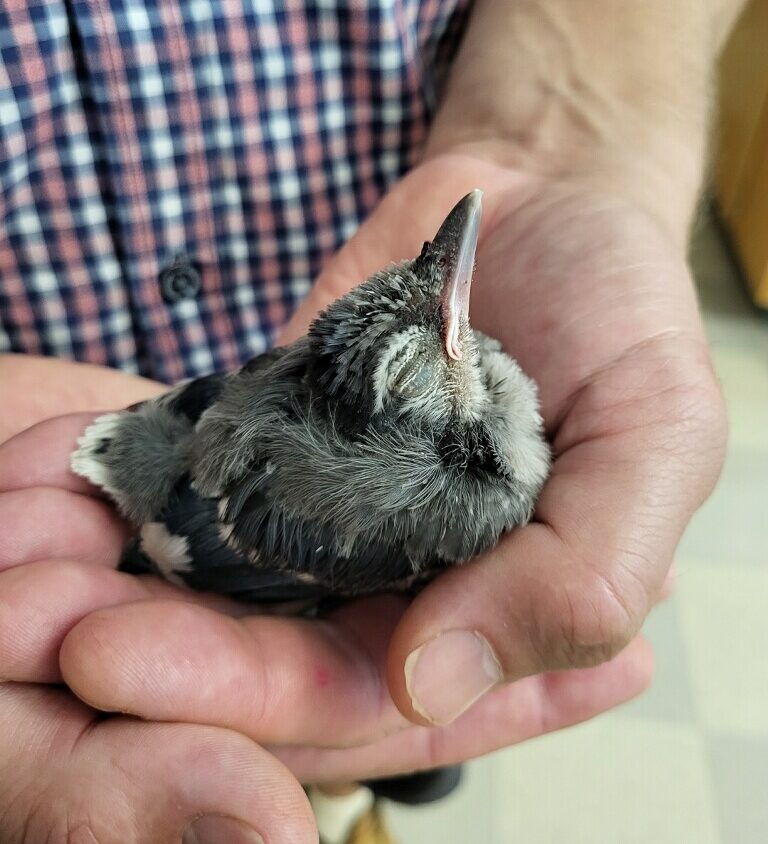During the spring and summer, people often tend to find baby birds in parks, gardens, or at home. Every April I start receiving texts and e-mails from friends worried over the safety of a young bird in their yard or by their office. Adorably ugly and helpless-looking, it’s easy to feel bad for baby birds and want to protect them. But should you? And if so, what should you do? This Outdoor Tips post is a step-by-step guide on what to do if you find a baby bird.
Here you’ll find a series of questions that you can ask to figure out what, if anything, should be done about a baby bird you come across. When you first find a baby bird, try to give it space and examine it from at least 9-15 feet (3-5m) away.
Avoid approaching or handling any wild animal unless you know it will be safe, both for you and the animal. A good pair of binoculars makes a good way to check in on a baby bird without stressing it out.
1. Are there any signs of injury?
The first thing to do for any baby bird encounter is to look for evidence of harm. This will tell you whether or not the bird might need your help. You’ll want to look for the following things:
- Blood on or around the bird
- Evidence of broken bones like limping or uneven wings
- Limping or shivering
- Labored breathing or gasping
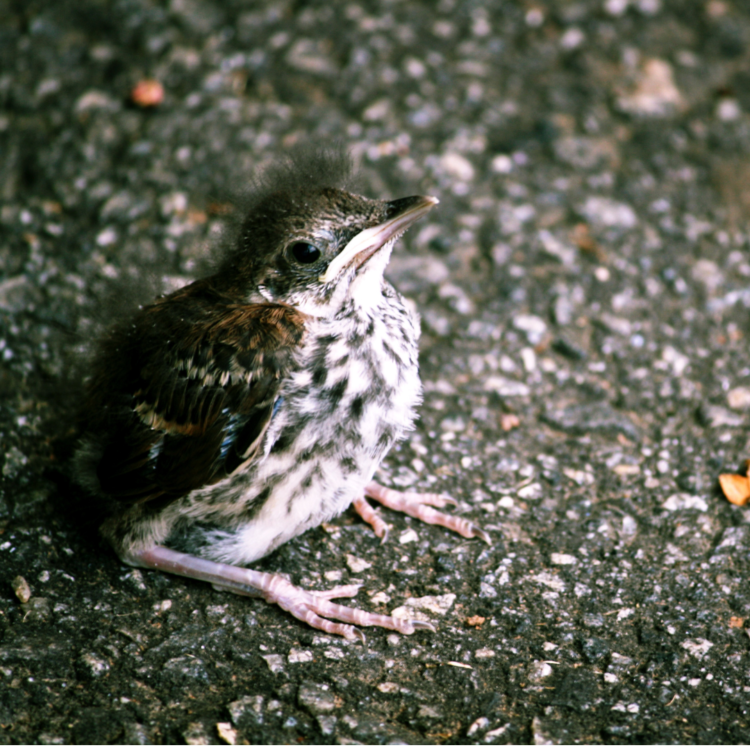
If you do see any of these signs, chances are that you found an injured bird. While most of the time, wild birds will avoid people, injured birds may not be able to get away. In this case, you should get in touch with a licensed wildlife rehabilitation facility. In the United States, the U.S. Fish and Wildlife Service offers a map to find migratory bird rehab centers in your area.
If you’re in the United Kingdom, British Wildlife Rehabilitation Council has a list of wildlife rehabilitation facilities for the U.K that may come in handy. It’s worth noting that any wild bird requiring help should go to a rehab facility. This is because keeping any wild bird in the United States is illegal under the Migratory Bird Treaty Act.
If there are no obvious signs of injury, move on to the next question.
2. Does the bird have feathers, or is it pink and bare?

In my post on baby crows, I introduced the concept of altricial vs. precocial baby birds. One of the biggest factors in what to do if you find a baby bird is what kind of baby bird you’re dealing with. As a recap, precocial baby birds often look more or less like baby chickens (chicks). They are fluffy, pretty darn cute, and can run around and do their own thing. As long as they aren’t injured, precocial baby birds probably don’t need your help. Mom or dad are probably nearby keeping an eye on them.
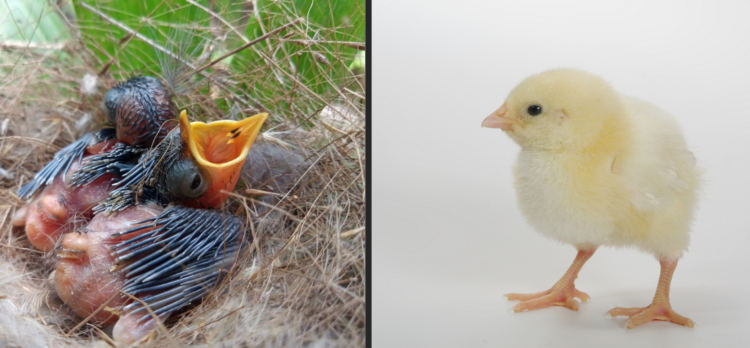
Altricial chicks
The situation is more complicated for altricial chicks. Songbirds like robins, warblers, flycatchers, as well as crows and jays have altricial young. This type of baby bird is born pink and featherless in a nest, and the parents must feed and look after them. Ornithologists and naturalists call them nestlings.
They are utterly helpless in these early stages of development. The clearest indication that you’ve found a nestling is if its body is mostly bare of feathers. The bird’s pink skin will be easily visible.
If you find a nestling, look around for a nest from which it may have fallen. You might check under the eves of a nearby building or in shrubs and low tree branches in the area. If you can find the nest, gently pick up the nestling with a clean cloth or shirt and place it back in the nest. If you can’t find a nest, contact a wildlife rehabilitation center.
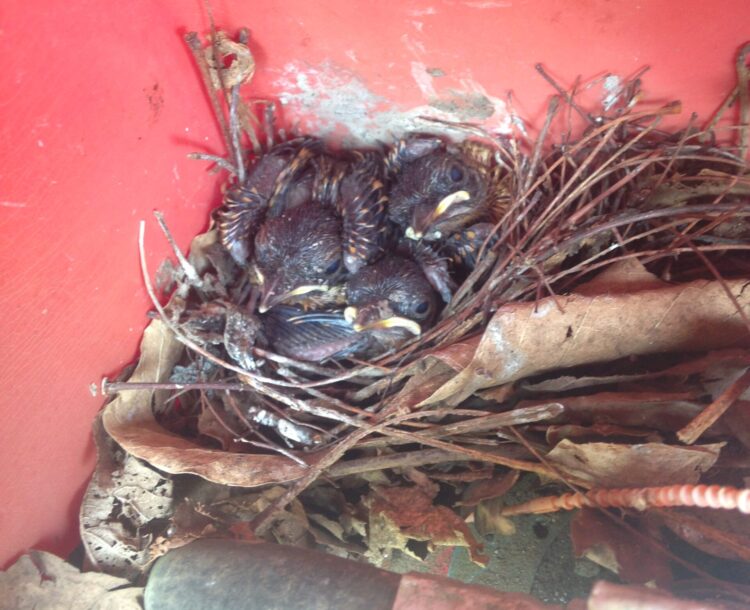
3. Is the baby bird a fledgling?
Altricial baby birds aren’t helpless forever. In a few weeks, they start growing feathers, their eyes open, and they are able to stand up and walk. Eventually, they leave the nest, at which point they are fledglings. Fledglings have much of their body covered in feathers, and can stand and walk around.
If they have recently left the nest, they are probably unable to fly. That’s right—many baby birds leave the nest before they can fly. At this stage, they will run around on the ground or hop up into shrubs and trees to stay safe from predators. They are still reliant on their parents to feed them, and will beg loudly with various squeaky calls to get their parents attention.
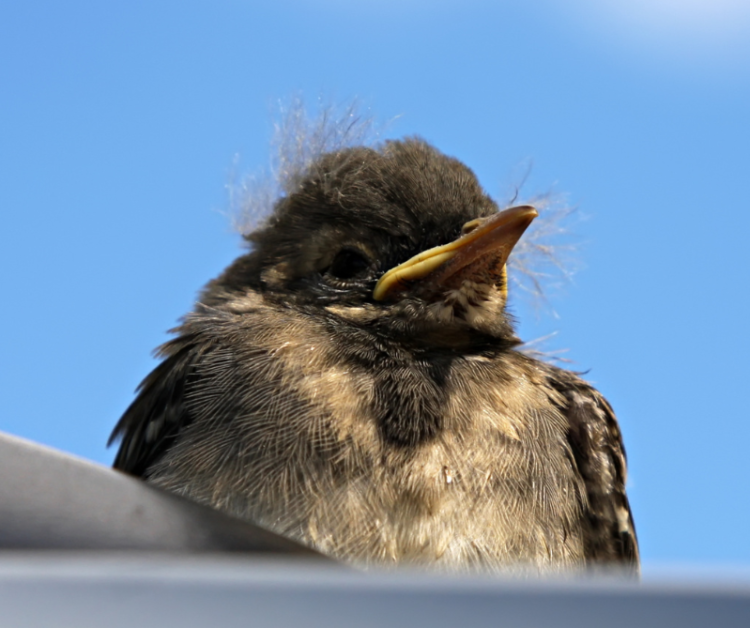
How to know if you found a fledgling
If you find a fledgling that is not injured, it probably doesn’t need your help. Because of that, it’s worthwhile asking some questions to determine if your baby bird is a fledgling. Here are some things to look for:
- Can it stand up and walk on its own?
- Are its eyes open?
- If you walk away or hide out of sight, does it start vocalizing?
- Does it notice you or look at you?
- Can it hop or climb in tree or bush branches?
If the answer to some of these questions is yes, and your bird has even emerging feathers, you probably have found a fledgling. It is very common to find fledglings out in the open in late Spring and Summer. At this stage, they are too young and inexperienced to know that people (or pets!) are a danger to them.
Because of this, they may not run away from you. This does not mean that they need your help. Their parents, who are smart enough to avoid you, may be watching you carefully from nearby.
If the bird does not do any of the things listed above, it may actually be a nestling. In which case, look for a nearby nest as described in question 2.
4. Are mom and dad around?
If you find a fledgling and its parents are watching it, chances are that everything is fine. The baby just didn’t know enough to hide when approached. Often, if you’re near a fledgling, the parents will be nearby and scolding you with alarm calls and other vocalizations. Mockingbirds (Mimus polyglottos) in the U.S. will actively attack you if you’re near one of their offspring.
If you aren’t sure if the parents are nearby, the best thing to do is to distance yourself from the fledgling but keep an eye on it. If the baby is near your house or vehicle, getting inside and looking through the window is a great approach. Generally, you want to get far enough away, or well-enough hidden, that the parents will come back to feed the baby. If they think that the coast is clear and that you have left, they will come back.
If you are out of sight or sufficiently far away and don’t see any parents within a couple of hours, call a wildlife rehabilitation facility.
5. Is the bird in any danger?
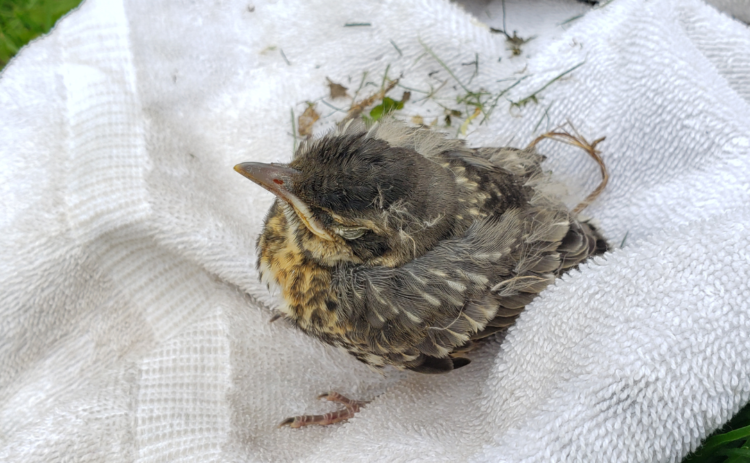
The final condition in which you should consider helping a baby bird is if it is in danger. For example, if there are cats or dogs in the area that might try to eat it. Alternatively, the bird could be in the middle of a busy road or walking path, where things could crush it. I have also seen fledglings fall into gutters and buckets and be unable to get back out.
If you think a fledgling may be in danger, it may be ok to move it to a safer spot. Just like handling nestlings, gently pick up the fledgling with a clean towel or shirt and move it to a low, wide tree branch or into a bush. The fledgling should be able to perch on its own, or hop and walk among the branches to stay safe from predators.
Thanks for reading about what to do if you find a baby bird!
If you’d like advice on another outdoor topic, or were able to use this guide, let me know in the comments, or send me a message using the Contact form.

